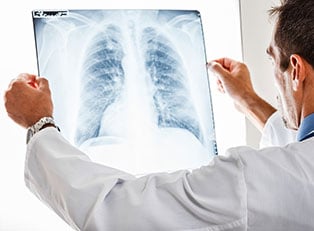Lymphoma is a form of cancer that attacks the lymphatic system, which is the part of the body that works to fight off diseases. This system includes the lymph nodes, the thymus gland, bone marrow, and the spleen. Lymphoma has the potential to affect all of these components, as well as spread to other organs throughout the body.
There are many different types of lymphoma, divided into two main categories: Hodgkin’s lymphoma and Non-Hodgkin’s lymphoma. Treatments and causes will vary depending on the exact type of lymphoma that is affecting you.
Hodgkin’s Lymphoma
Also known as Hodgkin’s disease, Hodgkin’s lymphoma is much less common than other forms of the condition. Hodgkin’s lymphoma is caused by cells in the lymphatic system growing abnormally and creating tumors. These tumors eventually end up compromising your body’s ability to fight infections. Within this category of lymphoma, there are many different types. These include:
- Classical Hodgkin’s lymphoma: This is the more common type of Hodgkin’s lymphoma, and it includes many subtypes, including nodular sclerosis Hodgkin’s lymphoma, mixed cellularity Hodgkin’s lymphoma, lymphocyte-depleted Hodgkin’s lymphoma, and lymphocyte-rich Hodgkin’s lymphoma. This type of Hodgkin’s lymphoma means that you have large, abnormal cells called Reed-Sternberg cells in your lymph nodes.
- Lymphocyte-predominant Hodgkin’s lymphoma: This type of Hodgkin’s lymphoma is much more rare than the classical type and involves larger abnormal cells that are sometimes called popcorn cells. The earlier you are diagnosed with lymphocyte-predominant Hodgkin’s lymphoma, the better your chance of survival will be.
Depending on the stage and type of Hodgkin’s lymphoma you have, treatment will be determined by you and your doctor. The options for treatment usually include chemotherapy, radiation, and stem cell transplants. The goal of all of these therapies is to destroy as many cancer cells as possible in order to bring your disease into remission. If the cancer has spread to other parts of your body, Hodgkin’s lymphoma will be much more difficult to treat.
Non-Hodgkin’s Lymphoma
Much more common than Hodgkin’s lymphoma, Non-Hodgkin’s lymphoma is caused by the presence of cancerous lymphocytes (a type of white blood cell) in your lymph nodes. Normal lymphocytes have a regular life cycle, in which they die and your body creates new ones. However, with Non-Hodgkin’s lymphoma, they continue to grow and divide, which creates tumors. This disease also has the potential to spread to other parts of your lymphatic system. It is possible but rare for Non-Hodgkin’s lymphoma to spread to other organs in your body.
If you are diagnosed with Non-Hodgkin’s lymphoma, then treatment might not even be necessary. It is common for Non-Hodgkin’s lymphoma to be very slow growing, meaning that if severe symptoms are not present, it may not require treatment for many years. However, your doctor will still want to schedule regular checkups to monitor the progression of the disease.
If treatment is necessary, it will be very similar to Hodgkin’s lymphoma, with the options of chemotherapy, radiation, and stem cell transplants. There are also medications that work to enhance your immune system and others that deliver radiation directly to cancer cells that your doctor may want to try.



